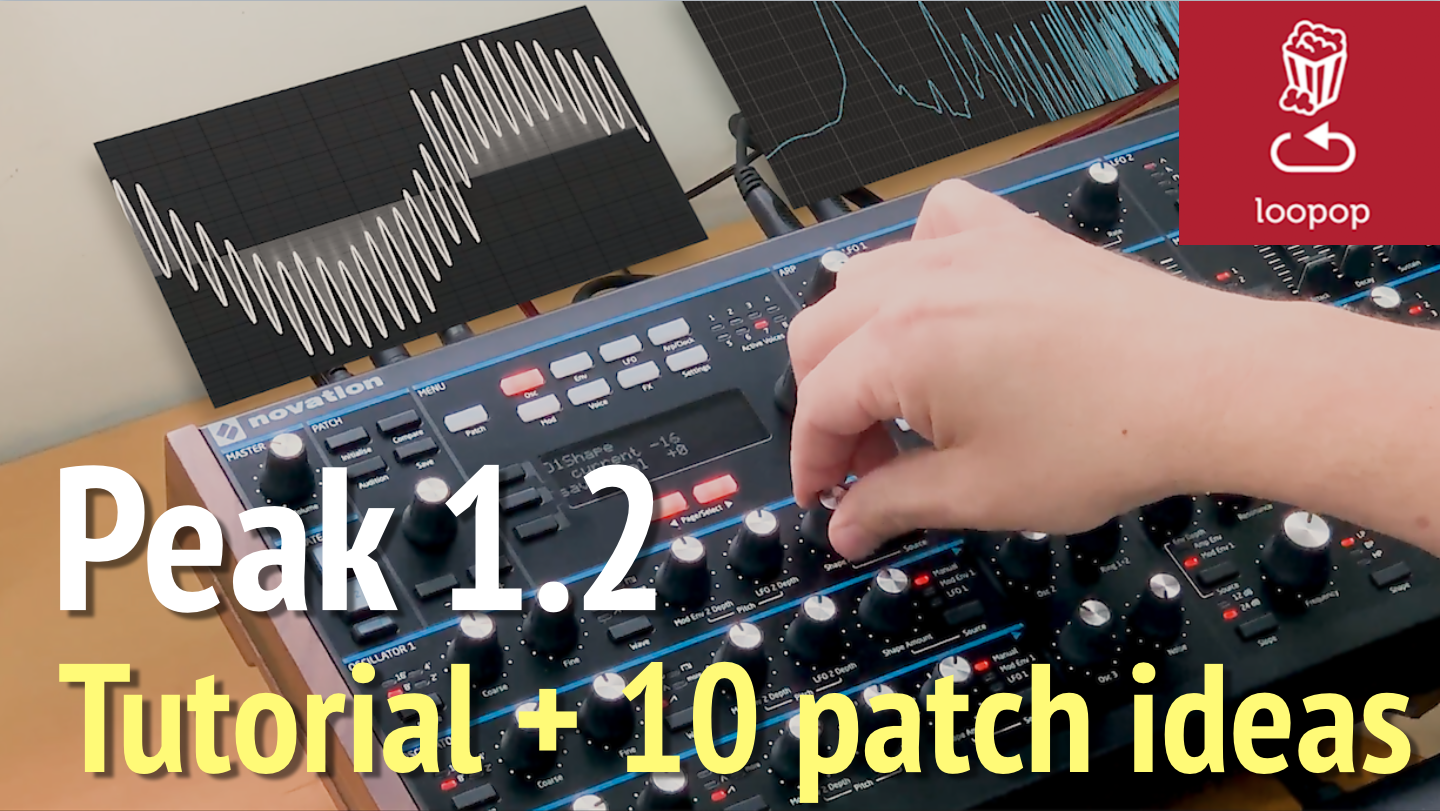Peak from Novation is an 8-voice hybrid synth – with digital FPGA based oscillators, an analog filter, drive and distortion, and digital effects – and it just got a pretty big firmware update with interesting new features.
This video gives a brief overview of Peak and then dives into what’s new in version 1.2, along with 10 patch ideas that use its new features.
Patch Idea #1: “No Gain No Pain”
In this patch, each of Peak’s 3 oscillators uses a different waveform and different tuning, and Peak is set to play all three in 2 voice unison. This patch is used in the intro to the video – gain and distortion are gradually added to dramatically change Peak’s sound.
Patch Idea #2: “Sunrise Sunset”
This patch uses a square LFO 1 to create a rhythmic beat by closing and opening the oscillator level. LFO 2 is set to sawtooth and cycles through the wavetable. Both LFOs are tempo synced. I picked the Sunrise wavetable but you can swap it out for any of the others and change the sound quite dramatically. The patch is dynamic enough on its own, so the filter isn’t used and can be added later on for further sound design and development. The Animate buttons and mod wheel are used to add FM from oscillator 3 to oscillator 1.
Patch Idea #3: “Bend Chorus Feedback”
This patch takes the pitch bend wheel and uses it as modulation source to the delay’s feedback parameter, producing quite a special effect.
Patch Idea #4 : “Reverb HPF Monster”
This patch rapidly modulates the high pass filter of Peak’s Reverb, taking it from smooth and dreamy to ominous and creepy…
Patch Idea #5: “Aftertouch Twang”
This patch lets you use aftertouch to quickly modulate the delay time, which at high feedback rates can produce anything from a nice distortion with delicate key pressure, or an all-out resonant “twang” if taken to extremes. Change the oscillator type to get different “twang” tones.
In this preset I changed the default FX chain routing. By default, the reverb and delay work in parallel, so reverb isn’t applied to the tone the delay effect generates. Rearranging the FX chain and putting the delay effect before the reverb takes care of that.
Patch Idea #6: “Organ with Echo”
In this preset, I use LFOs 1 and 2 to modulate the level of oscillator 3 level, and LFO 3 is helping out by modulating the shape of oscillator 1.
Patch Idea #7: “Octave Skip”
In this preset, LFO 1 changes oscillator 1’s shape to random places in the wavetable, LFO 2 creates an alternating octave baseline, and LFO 3 is slowly moving the filter cutoff back and forth to makes sure the sound keeps evolving over time.
Patch Idea #8: Looping envelopes
This patch explores looping the filter mod envelope alongside different modulations of the attack and decay times. The filter resonance is set quite high so that we can clearly hear the impact of the attack and decay stages, as they get shorter and longer.
Patch Idea #9: “Filter sings 6/8”
This patch explores one of the many potential uses of Peak’s new Hold stage. By default, the AD pattern slowly modulates the filter’s resonant cutoff frequency to play an arpeggio pattern using the core oscillator’s harmonics. The attack stage plays harmonics on the way up, and the decay stage plays them on the way down, creating a nice 6/8 style pattern if notes are played in succession at the end of each “arp”. Introducing a Hold stage between the attack and decay stages changes the timing and character of this pattern.
Patch Idea #10: Envelopes with a delay stage?
Peak’s envelopes got a Hold stage between its attack and decay envelope stages, but if you’re like me and wanted to see a delay stage as well, there’s a way to make that happen, sort of, using Peak’s LFOs 1 or 2. They can be configured to play just once, effectively turning them into simple envelopes. You can then use the optional “Gate In” parameter of these LFOs (in conjunction with increasing their Fade Time) to effectively delay their impact.
Want to download these presets and more?
These presets, along with 10 more which I think are quite nice, are available for download to Loopop supports on Patreon – check them out here.
NOTE: These presets require Peak firmware version 1.2
